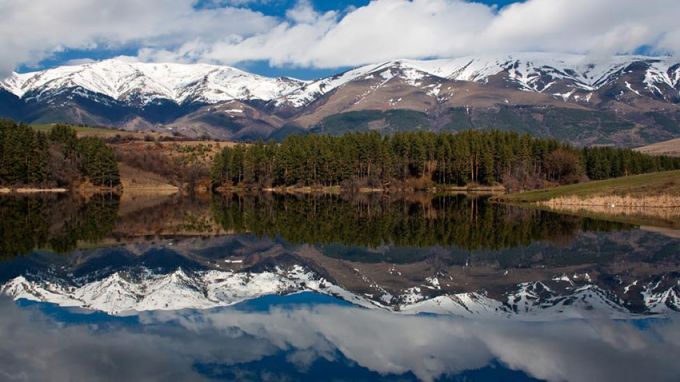 9
9
“Water and Energy” is the strapline of this year’s World Water Day marked annually on March 22. On this occasion the Bulgarian Water Association and the "I love water" NGO have decided to draw public attention to Bulgarian dams through a national photo contest. It is part of the International Water Bridge campaign, which takes place in Sofia for the third consecutive year. The competition caused great interest as 250 photographers sent over 2,500 images. Visitors to www.waterbridge.info are given the opportunity to rediscover the incredible beauty of aquatic landscapes, for which they could vote in the course of a month. The 50 most impressive photographs will be displayed at the National Museum of Earth and Man from March 17 to 23, 2014 as the three winners will be announced at a special ceremony on March 22 in the Museum.
"There were two reasons why we chose this topic", explains Antoinetta Salfidge, chairperson of the “I Love Water” Association. "First of all, dams are extremely beautiful and very frequented places. And the photo contest proves it. The authors have revealed to us little-known beautiful spots near these waters. We were all surprised by so much beauty. And we asked ourselves – is this really Bulgaria? I am very glad that photographers came forward and provided us with those moments captured by their cameras. Even places that are often visited are seen from another angle, in a different light, a different mood and actually give countless perspectives to our beautiful Bulgaria."
These fascinating photographs have become the occasion to put on the public agenda a host of problems around the management of dams in this country. A review of their status last year shows that the number of those which are not in good condition and pose a risk to the population is growing instead of decreasing.
"There are many uncertainties around these dams in Bulgaria and it is not quite clear who manages them," says Ms. Salfidge. "Meanwhile, European legislation is moving forward. The EU has drawn new directives and Bulgaria must comply with them. They are connected with real-time monitoring of the level of dams, the quantity and quality of water, its temperature, etc. In critical situations we should have an early warning system of the danger of flooding."
The lack of such a system was tangibly felt two years ago when the cracked wall of the Ivanovo dam near Harmanli in southeastern Bulgaria almost devastated the nearby village of Bisser.
All photos are kindly provided by the I Love Water Association
English version: Rossitsa PetcovaFor 100 years, foresters in Bulgaria have been organizing Forest Week. A concert entitled “A century of eternity” on 7 April will give the official start to the initiative dedicated to the planet’s lungs. And though it has been a century since..
The eagerly-awaited Tulip Parade at the University Botanical Garden in Balchik is at its peak. This year’s parade includes more than 45,000 bulbs, and 27 varieties that are new to the Garden, among them Tulipa "Carnaval de Nice, which combines..
In 2024, Bulgaria has 15,737 foreign students, making up 8.6% of all current students in the country. By comparison, this share has doubled over the past decade. This data comes from NACID , updated annually in the Bulgarian University Ranking..
In 2024, Bulgaria has 15,737 foreign students, making up 8.6% of all current students in the country. By comparison, this share has doubled over the..
The eagerly-awaited Tulip Parade at the University Botanical Garden in Balchik is at its peak. This year’s parade includes more than 45,000 bulbs,..
Divers will clean the seabed around the port of Sozopol today, reports BTA. "Since 2018, we have been doing the cleaning, completely voluntarily, with..

+359 2 9336 661
